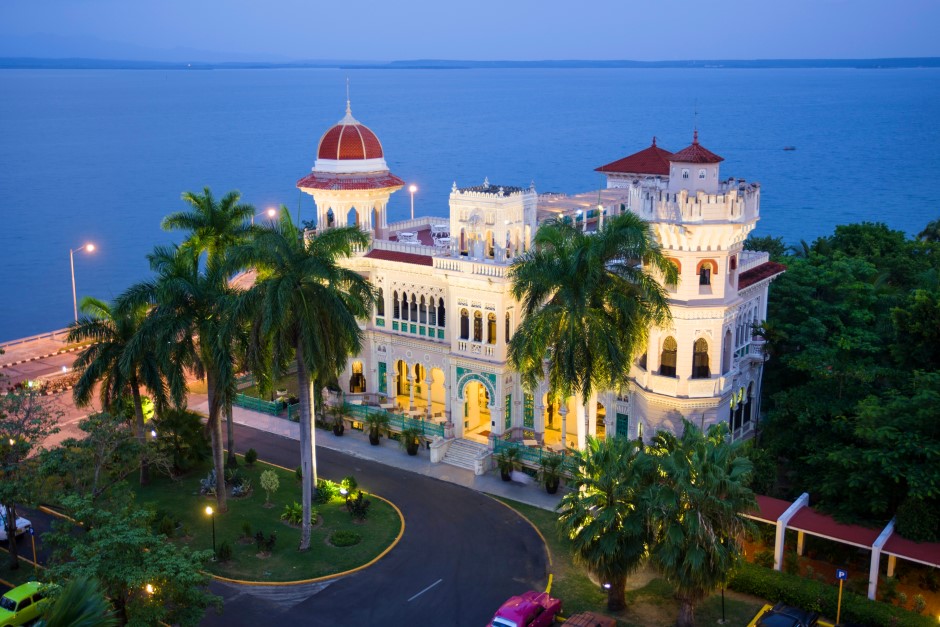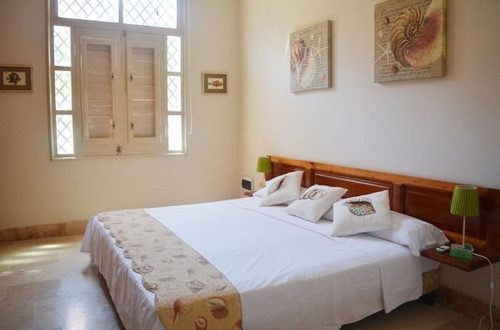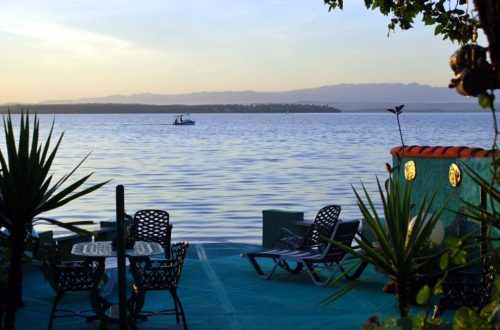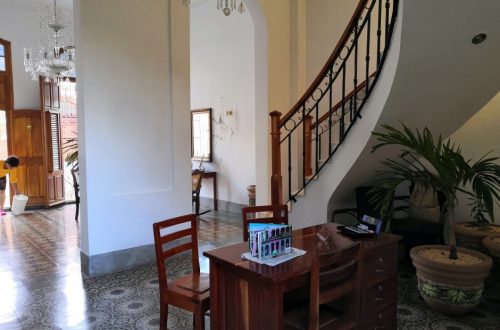Palacio de Valle
Nestled in the heart of Cienfuegos, a beautiful city on the southern coast of Cuba, Palacio de Valle is a stunning architectural gem with a rich and fascinating history. This eclectic palace, built in the early 20th century, captures the imagination of both locals and visitors alike with its grandeur, opulence, and intricate design. In this 3000-word article, we delve into the captivating story of Palacio de Valle, exploring its architectural inspirations, the visionaries behind its creation, and its various roles in the tapestry of Cuban history.
A Dream Takes Shape: The Beginnings of Palacio de Valle
The origins of Palacio de Valle date back to the late 19th century when the Valle family, an affluent Spanish clan, moved to Cienfuegos in search of business opportunities. Their arrival in the city coincided with the height of the sugar boom, which allowed the family to amass considerable wealth.
In 1913, Acisclo del Valle, the head of the family, purchased a plot of land in the exclusive Punta Gorda neighborhood with the dream of building an extraordinary palace, one that would serve as a symbol of his family’s prosperity and influence in the region. To make this dream a reality, he hired renowned Cuban architect, Pablo Donato Carbonell, whose talent and vision would shape the palace’s enchanting design.
The Architectural Marvel: A Blend of Styles and Inspirations
Palacio de Valle’s architectural style is a true reflection of the eclectic tastes and global influences of the era. Carbonell expertly blended elements of Gothic, Moorish, and Venetian styles, creating a unique fusion that captivates visitors to this day. The palace is also a testament to the architect’s dedication to detail, as evidenced by the intricate carvings, exquisite stained-glass windows, and the vibrant ceramic tiles imported from Spain.
The Gothic influence is visible in the pointed arches, ribbed vaults, and the palace’s central tower, reminiscent of medieval European castles. Moorish elements, inspired by the enchanting palaces of Southern Spain and North Africa, dominate the palace’s façade, including its horseshoe arches, arabesque patterns, and ornamental latticework. Finally, Venetian style, characterized by ornate balconies and graceful columns, adds a touch of Italian elegance to the palace.
The result is an architectural masterpiece that stands as a testament to the creative genius of Pablo Donato Carbonell and the ambitious vision of Acisclo del Valle.
The Construction: Challenges and Triumphs
The construction of Palacio de Valle was an arduous process, fraught with challenges that demanded innovative solutions. The palace’s ornate design required specialized craftsmen, which meant that many of the laborers were brought in from Spain and Italy to work alongside local Cuban artisans. This collaboration resulted in a harmonious blend of styles, techniques, and materials, which remains a hallmark of Palacio de Valle.
The construction process took nearly a decade, with the palace finally completed in 1921. Over the years, it has been meticulously maintained and restored, ensuring its status as one of the best-preserved examples of early 20th-century Cuban architecture.
The Golden Era: A Symbol of Prestige and Elegance
Upon its completion, Palacio de Valle was the epitome of luxury and sophistication. It boasted lavish interiors, adorned with exquisite chandeliers, precious woods, and opulent furnishings. The palace was equipped with modern amenities such as electricity, plumbing, and central heating, making it one of the most advanced residences of its time.
The Valle family spared no expense in hosting extravagant parties and lavish events at the palace, which soon became the epicenter of Cienfuegos’ high society. Dignitaries, aristocrats, and renowned artists from Cuba and beyond graced its halls, and Palacio de Valle quickly gained a reputation as a symbol of prestige and elegance.
The palace also played a crucial role in the city’s cultural scene, as it was often used to stage theatrical performances, concerts, and art exhibitions. The Valle family’s patronage of the arts contributed to Cienfuegos’ burgeoning reputation as a cultural hub, further cementing the city’s importance within Cuba.

A New Chapter: From Private Residence to Public Monument
The social and political landscape of Cuba underwent dramatic changes in the mid-20th century, and Palacio de Valle was not immune to these transformations. In 1959, following the Cuban Revolution, many affluent families left the country, including the Valle family, who migrated to Miami, Florida.
In the wake of the revolution, the Cuban government nationalized many private properties, including Palacio de Valle. The palace was then converted into a public monument and opened its doors to the general public for the first time.
Today, Palacio de Valle serves as a multi-purpose venue, hosting events such as weddings, conferences, and cultural functions. It also houses a restaurant and bar, allowing visitors to enjoy the palace’s opulent interiors while savoring traditional Cuban cuisine and cocktails.
The Legacy: A Lasting Impact on Cuban Culture and History
Palacio de Valle has not only left an indelible mark on Cuban architecture but also on the cultural and historical fabric of the country. The palace has borne witness to some of the most significant moments in Cuban history, from the height of the sugar boom to the Cuban Revolution and beyond.
Its architectural style continues to inspire generations of architects and artists, who seek to emulate the palace’s enchanting fusion of styles and techniques. In 2005, the city of Cienfuegos, including Palacio de Valle, was declared a UNESCO World Heritage Site, recognizing the city’s outstanding universal value and unique architectural heritage.
Palacio de Valle is more than just an architectural marvel; it is a testament to the resilience, creativity, and cultural vibrancy of Cuba. As a living monument, it serves as a bridge between the past and the present, allowing visitors to catch a glimpse of the country’s rich history while also witnessing its ongoing evolution.
Palacio de Valle, a jewel in the crown of Cuban history, stands as a powerful symbol of the country’s architectural, cultural, and historical legacy. From its ambitious beginnings to its transformation into a public monument, the palace has captured the imagination of countless visitors, inspiring awe and admiration for its unique design and rich heritage.
Today, as the palace continues to welcome guests from around the world, it stands as a proud reminder of the strength, beauty, and resilience of Cuban culture. Whether you are an architecture enthusiast, a history buff, or simply a curious traveler, a visit to Palacio de Valle is sure to leave you enchanted and inspired.



